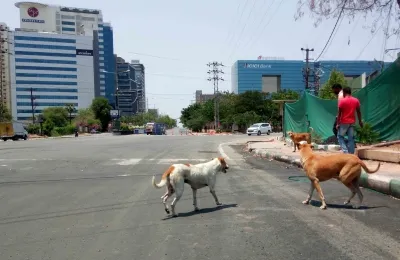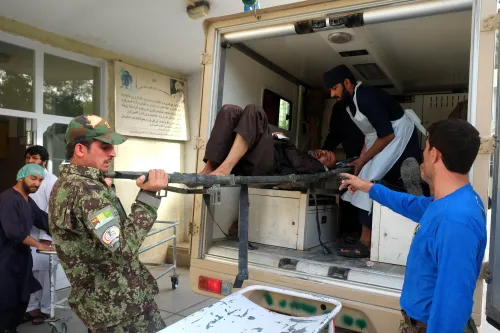Why Did the Supreme Court Order the Immediate Removal of Stray Dogs from Delhi-NCR?

Synopsis
Key Takeaways
- Supreme Court mandates removal of stray dogs.
- Immediate action is crucial for public safety.
- Civic bodies must construct shelters if none exist.
- Legal consequences for obstructing the removal.
- Focus on balancing animal welfare and human safety.
New Delhi, Aug 11 (NationPress) In a pivotal move, the Supreme Court has mandated that civic authorities throughout Delhi-NCR promptly capture all stray dogs and transfer them to shelters, highlighting serious concerns regarding public safety and the escalating risk of rabies.
A bench including Justices J. B. Pardiwala and R. Mahadevan described the scenario as “grim” and stressed that immediate action is crucial to secure the safety of children, women, and the elderly on the streets.
“We must ensure that the streets are entirely devoid of stray dogs. The time to act is now,” the court remarked.
This directive applies to the Municipal Corporation of Delhi (MCD), New Delhi Municipal Council (NDMC), and local authorities in Noida, Gurugram, and Ghaziabad.
The court has mandated these civic bodies to commence the collection of all stray dogs within their areas and relocate them to designated shelters. If such shelters are not currently available, authorities must construct them promptly and provide a report on the infrastructure to the court within eight weeks.
The bench also issued a strong warning that any organization or group that hinders the removal of stray dogs will face stringent legal repercussions.
This issue arose during discussions on the increasing threat posed by stray dogs in urban settings, where Solicitor General Tushar Mehta urged the court to intervene decisively to resolve the situation. He emphasized the urgent need for preventive strategies to tackle the risks of rabies and assaults on pedestrians.
The order from the Supreme Court represents one of the most comprehensive efforts to address the stray dog crisis in the capital region, with the potential to substantially change the urban environment and the management of stray animals.









